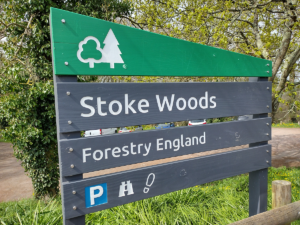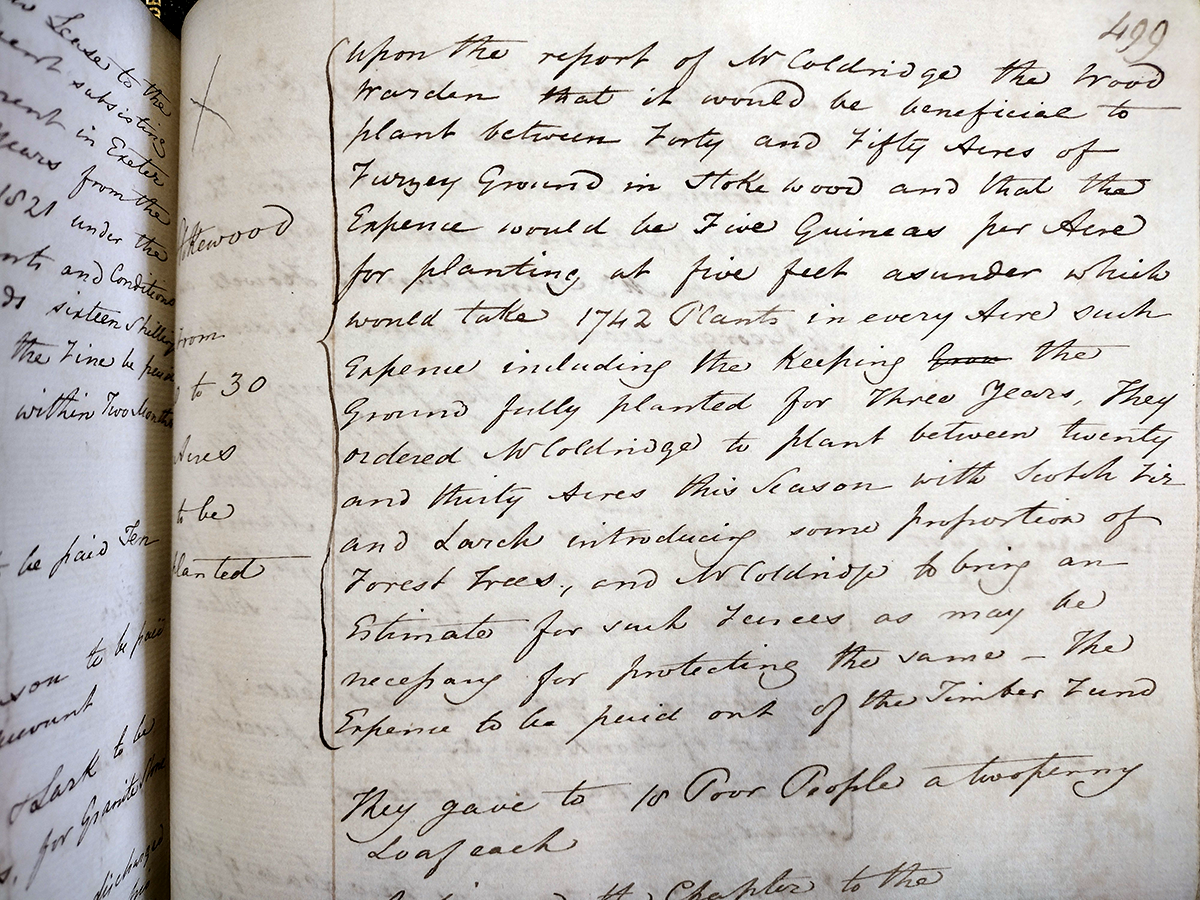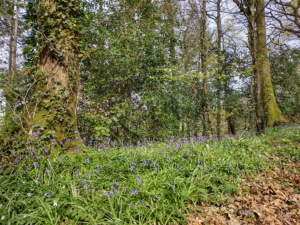 Stoke Woods is an ancient woodland just outside Exeter, roughly 2 miles north of the Cathedral. It is home to a wide range of species, which is recognised in its designation as a Site of Special Scientific Interest (SSSI). More than 40 species of bird nest or breed there, including tawny owl, woodpecker, and nightingale. The plant life includes bilberry, dog’s mercury, oak, ash, and wild cherry.
Stoke Woods is an ancient woodland just outside Exeter, roughly 2 miles north of the Cathedral. It is home to a wide range of species, which is recognised in its designation as a Site of Special Scientific Interest (SSSI). More than 40 species of bird nest or breed there, including tawny owl, woodpecker, and nightingale. The plant life includes bilberry, dog’s mercury, oak, ash, and wild cherry.
Today Stoke Woods is managed by Forestry England, but for at least 500 years – until the mid-19th century – it was owned by the Dean & Chapter. The timber was used to repair the Cathedral and chapter properties. In 1612 the Dean was permitted to have two trees towards the repair of his house “to be taken at convenient places where they may best be spared, having care to forbeare the best trees for reparacion of the Church”. It is still a source of sustainably produced timber, though no longer for the repair of the Cathedral.
Well-tended woodlands are managed not only as a resource for humans, but in ways that protect the soil and all the species that make up its complex web of life. Woodlands are a vital part of climate and landscape management, storing large amounts of carbon, and helping to reduce flooding and atmospheric pollution.

 Parts of Stoke Woods are being selectively felled to remove introduced tree species and allow native species to thrive, managing it back to how it might have been a few hundred years ago. Documents in the Cathedral Archives help us understand how the wood has developed. Historic woodland management practices and planting schemes are referenced, including requirements to plant two oak trees in place of each one taken, and periods of ground cover clearance. In 1821 the wood warden, Mr Coldridge, recommended a major new scheme, introducing 40- 50 acres of ‘furzey ground’ (gorse) at 5 guineas per acre, taking 1742 plants per acre at 5 foot spacings; and 20-30 acres to be planted with Scotch fir and Larch. These species, and many more can still be enjoyed by walkers today.
Parts of Stoke Woods are being selectively felled to remove introduced tree species and allow native species to thrive, managing it back to how it might have been a few hundred years ago. Documents in the Cathedral Archives help us understand how the wood has developed. Historic woodland management practices and planting schemes are referenced, including requirements to plant two oak trees in place of each one taken, and periods of ground cover clearance. In 1821 the wood warden, Mr Coldridge, recommended a major new scheme, introducing 40- 50 acres of ‘furzey ground’ (gorse) at 5 guineas per acre, taking 1742 plants per acre at 5 foot spacings; and 20-30 acres to be planted with Scotch fir and Larch. These species, and many more can still be enjoyed by walkers today.